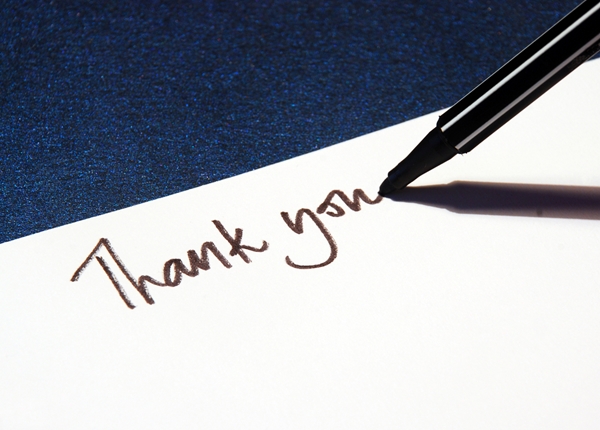Every detail counts when it comes to business, and demonstrating gratitude is no exception. Thank you cards can go a long way in showing appreciation. Not only does the message itself say, “thank you,” but taking the time to send out a card is like returning the favor. Someone took time out of their day to benefit you, and now you’re doing the same. On the other hand, forgetting to send a thank you note could send the opposite message, especially if your colleague or employer sees a lot of value in this type of gesture. Don’t miss out on an opportunity to send a thank you card, especially since it’s such an important yet simple tool.
What it does
A thank you card’s purpose stretches beyond demonstrating your gratitude. Especially for an interview, it says “I’m organized, I care about this job and I am willing to go the extra mile for you.” Essentially, a thank you card is a marketing tool for cultivating relationships in the business world.
If a thank you note itself brings such advantages to you as a job applicant or business partner, imagine what the added element of a handwritten message could do. Handwritten notes are a forgotten art, and sending one can make you really memorable. Plus, emails often get lost in a busy businessperson’s overfilled inbox. However, thank you cards won’t serve their purpose unless you use them effectively.
When to send it
For any occasion that could potentially warrant a demonstration of gratitude, you should take that opportunity. We all know how valuable our time is, so whenever someone puts the focus on you for a while, you should show that person you appreciate it. This goes for meetings, lunches and interviews, among many other possibilities. Furthermore, any physical gift should be acknowledged with a thank you card.
You should send the note either the same day of your meeting or the date you received the gift. You need to account for the time it takes for the letter to be delivered. Additionally, if you were interviewed by multiple people, send a thank you card to each person. This will not only get you remembered by more people, but it shows that you respect everyone, no matter their titles.
How to write it
First, start off with a card that matches the tone you’re trying to set. For example, as a job applicant attempting to make a professional first impression, go with a dark colored, bold print that carries an air of sophistication. Unless you suspect the employer would appreciate a fun or more graphic card, stick to a businesslike template. On the other hand, if you want to boost the morale of your organization by demonstrating employee appreciation, a colorful, playful theme might be more appropriate.
The format of the message is just as important as the cover of the thank you card. Start with a short greeting, addressing a person rather than the company’s name. In the body paragraph, the first line should mention the gift or service the recipient provided. Then, follow the statement up with a few sentences about how you benefited from the gift. For example, explain how the interview impacted your view of the job or how a meeting contributed to new ways of innovative thinking at your company. The note should be simple and concise but still incorporate several specific details. End the note with a salutation, and send it on its way.
In order to develop long-lasting professional relationships, it’s important to say thank you. The personal touch of a handwritten card effectively demonstrates gratitude and will be more memorable than an email.

